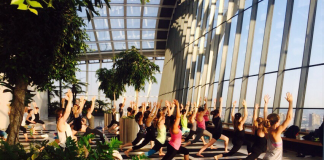Rock climbing is not only fun, but great for getting fit too…
Think back to when you were a child, running around the play area climbing all the trees in sight, racing your friends to the top… Rock climbing is exactly that but an adult version unleashing your inner child…
Rock Climbing is a sport with many variations which can be performed indoors or out which is perfect considering the weather in the UK isn’t always the greatest. If you are a beginner you can start on a bouldering wall where you don’t need any ropes or cables or if you are more advanced you can go straight to an outdoor wall.
Everything about rock climbing is exciting, challenging and very rewarding which is why it is becoming more and more popular each year.
We’ve put together some of our top tips for climbing and just why this sport is so beneficial for your fitness…
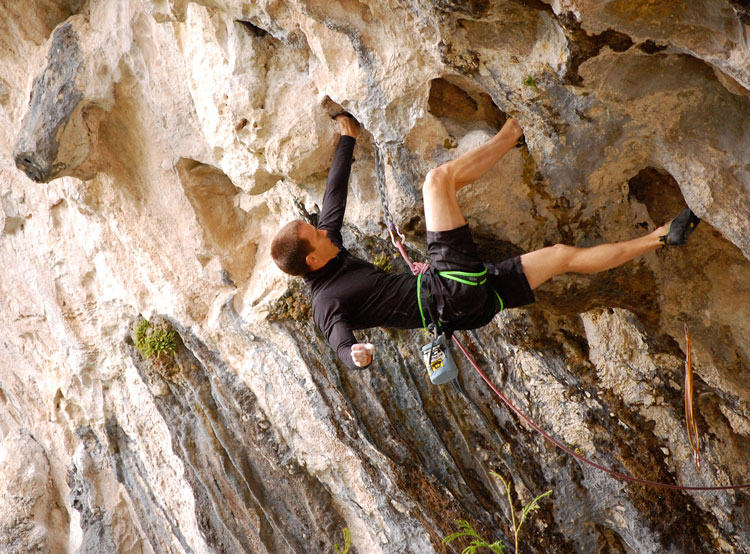
Our Tips
Technique – You should never under underestimate the amount of technique that climbing requires. You can be the strongest person in the world but you will still need to learn the technique to improve. Small things like flagging to keep your centre of balance correct or leaning out to take the strain off your wrist can really help when trying to get to that next rock to climb. A lot of people will say climbing is a lot more about the technique than the strength.
Stretching – When climbing, you put your body in all sort of positions which is why stretching before and after is so important. Stretching will get your body ready to perform the climb, improve performance and reduces the chance of injury. It will also allow you to climb for longer as your muscles won’t tire so quickly.
Planning – Climbing has many routes for you to attempt with different grading systems. You should always try to plan your route before climbing as this will give you the best possible chance of completion. (The last thing you want is to be half way up the wall with no choice but to fall!)
Strength – When climbing, you rely heavily on your body strength. Rock climbing involves a lot of reaching and pulling yourself up, and trying to lift your body up with the heel of your foot. Full body weight workouts can have a great affect on improving your climb. Things like pull ups, push ups and body weight squats can help tremendously when trying to improve your strength for a climb.
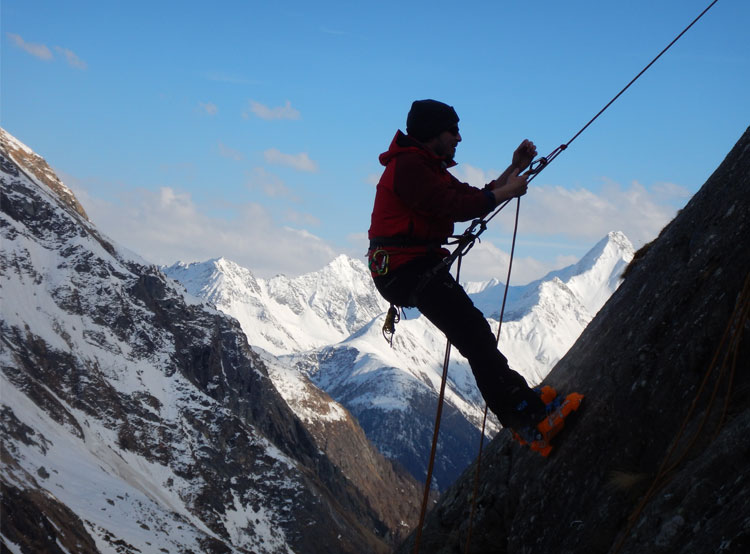
Benefits
Burns Calories – Climbing is a cardio and strength workout which is why it is such a great calorie burner. It is said that you could burn anywhere between 500-900 calories per hour as long as you are constantly on the wall attempting different climbs.
Challenges yourself – Looking up at a climbing wall can certainly be challenging and look like a scary thing to-do but once tackled, you will feel a great sense of achievement plus there is no greater satisfaction than when you are spending hours on one climb and finally achieve it.
Flexibility – When climbing you are always throwing yourself to different hand holds and trying to grip the almost-impossible. As you can imagine this involves putting your body into many different positions and having to adapt your positioning to each scenario. This is where flexibility is key to your performance. The more you climb the more you will be put into different position and the more your flexibility will increase.
Strengthens muscles – As mentioned above, climbing involves using your entire muscle group. Not one muscle is rested when attempting a climb, which is why climbing has such a huge health benefit. See below for a breakdown of the muscles which are worked:
- Arms: Your biceps work alongside your back muscles (Latisimus dorsi). When pulling your body up the hand-holds, your biceps are getting a big work out, especially when performing an overhang where your legs aren’t used at all. As they are relatively smaller than other muscles in your body you will often find them tiring a lot quicker (than your leg muscles for instance.)
- Forearms: If you think about climbing, the one muscle which is engaged every second of the workout is your forearm muscles. Called upon every time you grab the hand-hold, it can leave your arms feeling fatigued. This is why climbers will train these muscles so that they can last longer when climbing as well as work on new techniques to take the strain off of them.
- Shoulders: Whenever you are on a climbing wall trying to get to the next hand hold your shoulder are used to help stabilise you on the wall to stop you from losing control. The more you progress up the wall the more your shoulder muscles will tire, resulting in growth and a strength increase. They will soon be toned and defined in no time.
- Back: If you are after a toned back then look no further. Like a pull up, your lats, rhomboid and deltoids are all engaged during each climb. The lats are used when pulling your body up the climbing wall, whilst your rhomboid and deltoids are used when holding your position on the rock face.
- Legs: Although climbing engages your upper body, you must not forget about your lower body. You are often caught engaging your leg muscles when pushing on the foot hold to help lift yourself up. Your leg muscles will definitely become more toned.
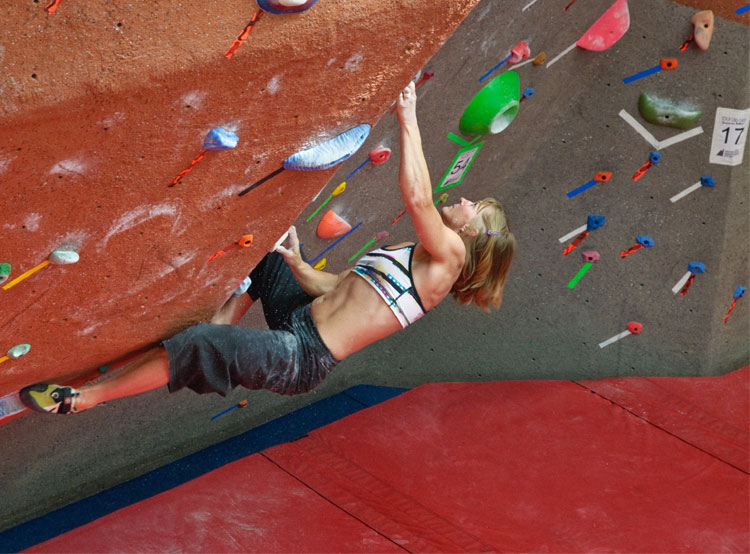
Different Types of Climbing
Rock climbing has seen an influx in popularity over recent years, largely due to its numerous health and fitness benefits. There are many different variations of rock climbing and we have listed some below as well as some tips to get you started…
Bouldering: A Personal favourite! This one is great for beginners but also the more advanced considering the level on the walls keep on increasing. This involves climbing a low wall without any ropes, allowing you the freedom of just being able to climb however you would like. (There are crash Mats on the floor in case you fall).
Indoor rock climbing: Similar to bouldering but with a taller wall and the added safety of ropes. This is great if you are wanting to develop your knowledge as you will need to learn how to tie knots and it’s also great for trying the longer climbs as the wall is a lot taller than a bouldering wall.
Ice Climbing: It’s as it sounds. This involves climbing with the added help of snow or Ice. Often done outdoors using ropes and protection this is very similar to indoor rock climbing by the fact that you will need to know how to tie the rope. With this you will require specialised equipment such as ice axes or mountain boots.
Mountaineering: This can be for the more advanced but also the beginners. Mountaineering involves walking as well as climbing and potentially ice climbing depending on your route. This can be in many locations like The French alps or Scotland if you are from the UK.
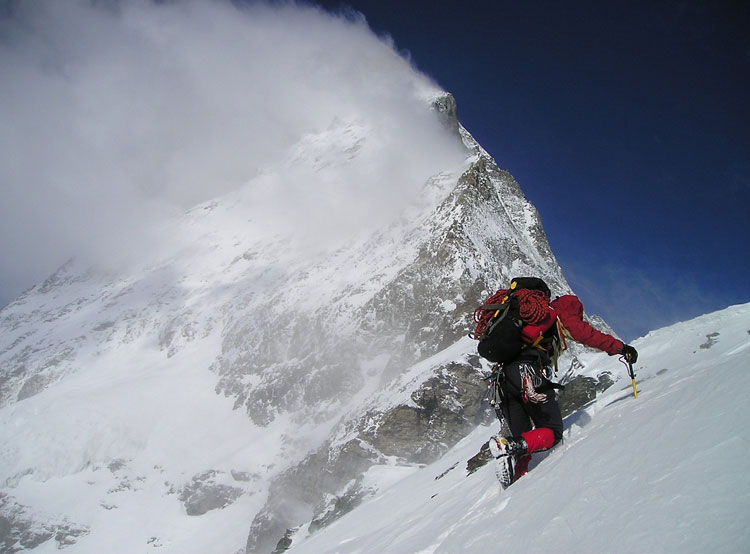
Have you been climbing yourself? Let us know of your experiences below…

